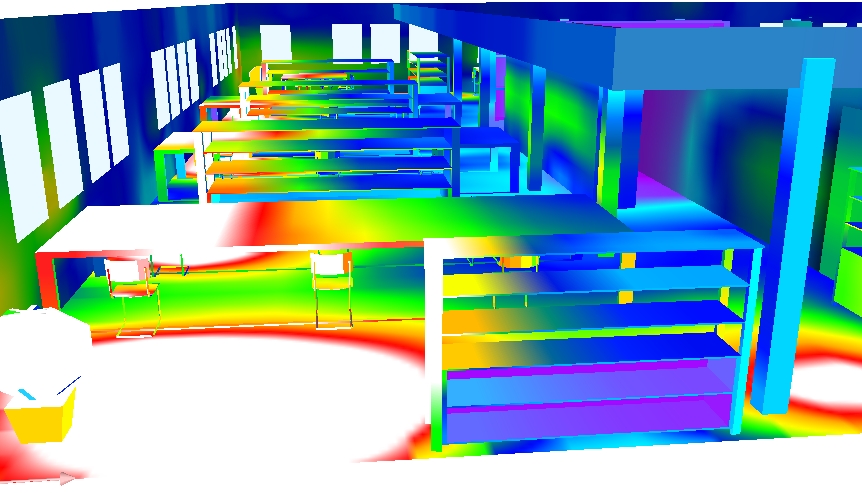In the particular evolving landscape involving architecture and urban planning, daylight surveying has emerged because a crucial aspect in creating spaces that are not only functional although also harmonious using their environment. As all of us strive to design properties that maximize all-natural light, daylight surveyors play an important function in this procedure. They combine art and science to assess how sunlight treats structures, informing choices that enhance both energy efficiency and occupant wellbeing.
Understanding typically the importance of daylight research in building style extends beyond aesthetics. These assessments straight influence energy intake, indoor air high quality, and overall output. As cities become increasingly dense, the necessity for successful daylighting strategies turns into even more evident. In this post, we may explore the complex role of sunlight surveyors and the variety benefits of doing thorough daylight studies for various qualities, from residential homes to commercial advancements.
The Role of Daylight Surveys throughout Building Design
Daylight research play a critical role in the particular building design procedure by ensuring that will structures are optimized for natural mild. By measuring the particular amount and top quality of daylight that will enters a space, designers and designers can make informed selections about layout, windowpane placement, and developing orientation. This research helps to produce environments that not really only enhance visual appeal but additionally improve functionality.

Incorporating daylight surveys into the design and style phase can considerably impact energy performance. By maximizing natural light, buildings can reduce reliance on artificial illumination, lowering energy intake and costs. Furthermore, strategic design knowledgeable by daylight information can minimize the particular need for cooling systems, thus promoting sustainable practices and leading to overall reductions in a building's carbon impact.
In addition, daylight surveys contribute to occupant wellbeing by creating healthier inside environments. Research offers shown that access to natural light increases mood, enhances efficiency, and promotes total wellbeing. With the use of the insights gained coming from daylight surveys, designers can create spaces that foster a positive atmosphere, boost emotional health, and increase the satisfaction of these who inhabit all of them.
Enhancing Energy Productivity and Occupant Well being
Daylight surveys play a crucial role throughout enhancing energy effectiveness across various types of complexes. By assessing exactly how natural light goes in a space, these surveys inform architects and builders concerning optimal window positionings, shading devices, and even reflective surfaces. This kind of not only decreases the reliance in artificial lighting but also helps minimize power consumption by harnessing the sun’s free illumination. Ultimately, this may lead to lower energy expenses and also a reduced carbon footprint for structures, aligning with typically the growing emphasis on durability in the developed environment.
In addition to be able to energy savings, the impact of sunlight surveys on resident wellbeing cannot end up being overstated. Natural mild has been displayed to improve mood, increase productivity, and advertise overall wellness among passengers. By utilizing Click here for info , buildings can supply environments that engender mental clarity plus comfort. Daylight research assess the accessibility to sunlight in several areas within some sort of structure, allowing designers to create areas that maximize direct exposure and promote a new healthier atmosphere regarding inhabitants, whether inside residential or commercial developments.
Furthermore, employing daytime surveys plays a role in the particular design of areas that mitigate bright glare and uncomfortable high temperature gain. A tailored method to daylight research provides for the ideal keeping of windows and even the selection of correct glazing types to control sunlight getting into the building. This particular not only increases comfort by eliminating harsh lighting situations but also curtails excessive cooling demands within warmer months. By simply balancing natural lighting with thermal convenience, daylight surveys drastically elevate the caliber of the indoor environment, thus advancing both strength efficiency and resident wellbeing.
The continuing future of Daytime Surveying Technologies
Because the demand for energy-efficient developing practices continues in order to rise, the upcoming of daylight surveying technologies looks encouraging. Advanced software tools are developed of which use artificial intelligence and machine understanding to analyze files more efficiently. These innovations allow daytime surveyors to simulate various environmental circumstances and predict precisely how changes in building design will affect natural light access. This particular not only simplifies the assessment process but additionally provides even more accurate results intended for architects and metropolitan planners.
In addition to be able to software advancements, the particular integration of online reality (VR) plus augmented reality (AR) is transforming how daylight surveys will be conducted. These systems enable clients and even stakeholders to imagine daylight access within proposed designs via immersive experiences. By simulating real-world situations, users can much better learn how light interacts with spaces in different times during the the day and year, leading to a lot more informed design selections that prioritize organic lighting and occupant comfort.
Moreover, portable daylight measurement devices are becoming increasingly advanced and user-friendly. These devices allow surveyors to conduct checks directly on-site, accumulating data in genuine time. Consequently products continues to develop, it offers better accuracy and transportability, making daylight research readily available for a wider variety of tasks. Together, these technological advancements are fixed to enhance the role of daytime surveyors in achieving sustainable and healthy and balanced built environments.
